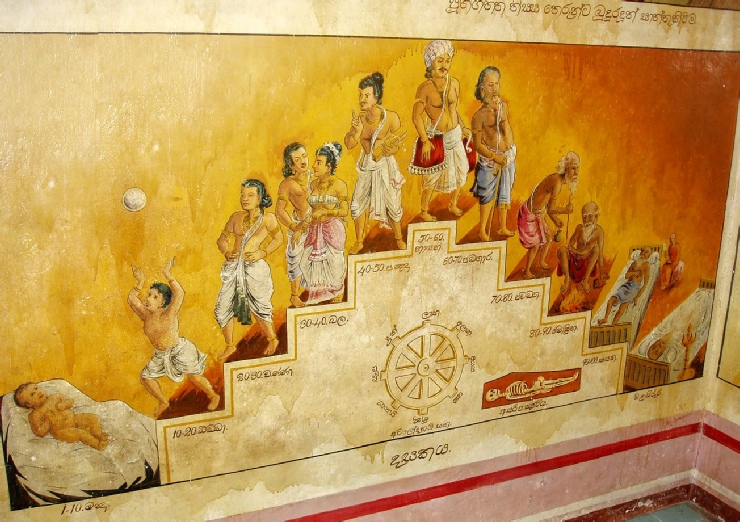© 2023 Dr. Margaret Sheppard
Pregnancy & Childbirth
Paul Wirz (“Exorcism and the Art of Healing in Ceylon”) gives an excellent description of the traditions and practices associated with pregnancy and childbirth: (“Exorcism and the Art of Healing in Ceylon” p.247-
Wirz’s research was conducted in the early 1950s, the main differences are that most babies are now born in a maternity unit in a hospital and mothers-
“If difficulties occur during the delivery, the edura is called in order to utter mantra or to perform a little ceremony. He first tries to help by reciting appropriate mantra, or with the "dehi kepima", or merely by administering holy water to the woman in labour (vatura maturala bona = water, charmed, drink). He may also draw a yantra on the leaf of an alu-
One of Wirz’s informants gave him the following detailed statement:
“When a pregnant woman feels that her time is near, she sends for the midwife. This person helps to deliver the baby and lays it on a clean cloth; then she continues to lend assistance to the mother until the afterbirth has appeared. Should this be delayed, she stuffs a clump of hair into the mouth of the woman to produce nausea which is supposed to drive it out. Then, the umbilical cord is cut through with a knife or scissors so that the piece remaining attached to the child's body is long enough to come up to its nose. The midwife takes this part of the cord between her thumb and forefinger and strokes gently along it towards the child's navel. Then, she folds the ends of the cord and ties it tightly with a thread. The region around the navel is finally anointed with a mixture of coconut oil and of dried burnt and powdered Garcinia combogia fruit. The afterbirth and the cut-
When the delivery is finished, the midwife passes the child over to one of its relations, generally the father, and is rewarded by him with a gratuity of from two to ten rupees, according to the circumstances. The child is then laid by its mother, but must not be nursed by her during the first three days of its life, because it might fall ill. The mother must squeeze her milk into a bowl and throw it against the wall. If the baby drinks its mother's milk in the course of these days, he is in danger of being afflicted with convulsions, rash, milk-
The mother is for the first three days not allowed to take any food other than rice-
After three days, the baby's eyes are dabbed with anduna, so that they are made clean and eye diseases are prevented.
If the infant cries too much and suffers from indigestion, or if anything else is wrong, the edura is called to perform a Bala-
… From the third month to its eighteenth year the child is subject to the influence of one or other of the giri-
….. If the child is afflicted with rash (milk-
The ritual begins with the uttering of mantra, while the edura holds the opened coconut in his hand. Then, he throws the five kinds of seed into the nut, stirs the liquid, and administers a few drops of it to the child three times. After the child has drunk, its head is sprinkled with the rest of the water, also three times. This ceremony is repeated the same evening and once more the following morning, in the presence of the family. Then, the lemon and orange twigs are put into the coconut and from time to time inspected to see whether the leaves are withering and losing their colour. If this occurs within the next twenty-
A few days after the child's birth, the father sends for the astrologer to have the first, provisional horoscope, cast; this fulfils more or less the function of a birth certificate and testifies as to the day and hour of the birth and the corresponding positions of the planets. Its price is twenty-
The astrologer will also appoint a favourable day, in accordance with the horoscope, on which the child may for the first time be taken out of doors into the sun. He will also fix the date on which the mother is first allowed to leave the house again. These first airings are called "ira pennana", i.e. exposure to the sun, or "tanniyarima". Before this day, the woman in childbed is not allowed to receive visits by strangers, nor must she be left alone. One of her relations must always be near to attend to her. But from the day she is allowed to go out again, she needs no further nursing.
When the astrologer returns with the horoscope, he mentions to the parents four or five letters which are connected with the child's moon-
Life Cycle/Rites de Passage

Painting in Buddhist Temple demonstrating the Cycle of Life -
The following sections follow the common Life Cycle traditions and practices found to be common in rural Sri Lanka during the 1990s to 2015 through birth to death.